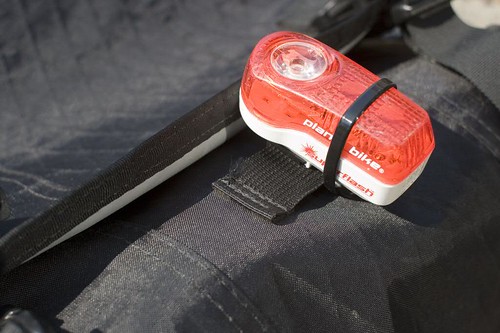
Zack Colman
criminally bad motorist
Black 2001 Saturn SC2. That's the car I drive — and if you're a bicyclist on the road but not in a bike path and you see my car, I hope you're wearing a helmet, because I might run you over.
Maybe not intentionally.
But you see, with all these things I can do in my car nowadays, such as choose a different song on my iPod, send a text message while driving or fall asleep at the wheel because I had to wake up for a worthless 8 a.m. biology lab, I might not notice you.
No this is not an article from The Onion, (America's finest [satirical] news source) though it would be a dead ringer. (possible future employer Zack??)
I hope to god Zack's article is merely a brilliant parody of Zack's alter ego. If so it is very fine piece of satire and appears to nail with certainty the attitude and criminally ignorance of the bad driver. However his publication is not known for its fine satire.
Zack is the poster boy of every bad driver.
The majority of all drivers are in fact courteous to cyclists but as much riding as I do I still run into the proverbial "Zack" about once a week.
Usually the Zack's of the world are anonymous cowards. They just proclaim their ignorance loudly out the car window as they drive by at high speed often putting the foot down on the accelerator, engine racing, perhaps even letting loose with a long blaring horn to let you know that you have inconvenienced them.
This anonymity and attempt to escape any response causes me to wonder if they subconsciously know of their ignorance and want to escape any possible enlightenment as to the law or otherwise. Fiercely protected ignorance.
I respect bicyclists who use bicycles as a form of exercise, since people certainly can never get enough fitness in their everyday routines.
But for as much as I respect and appreciate bicyclists, I will not hesitate to honk at them when they are interfering with the roads.
My concern is not merely about inconvenience.
Heh it's your fault as a cyclist for daring to inconvenience Zack.
At least, that's how Zack sees it.
While Zack cannot be inconvenienced with your life, nay even be bothered to stop text message while driving to prevent you physical harm, he sincerely claims to write this editorial out of an altruistic concern for the safety of all cyclists.
The truth is the Zacks of the world have no clue as to the law but are always certain of their superior knowledge on the subject of bicycling a subject which they've clearly never endeavored to try or educate themselves on.
As State News commenter "Dumb as D. Bobby" states:
Uh .. Z .. there are things called "facts" that journalists are supposed to be concerned about .. so —
Biking Regulations on Campus
http://www.bikes.msu.edu/msu_regulations/index.html
" .. Since bicycles aren't legally allowed to ride sidewalks on campus .."
[...]
Facts. They're hard.
Zack Colman has gone a step above and beyond the usual brood of bad drivers by proclaim his ignorance of cycling law in an editorial in the The State News, a Michigan State associated newspaper.
As State News commenter "Michael" (no relation to myself) also states:
Here's the law:
MICHIGAN VEHICLE CODE (EXCERPTS)
OPERATION OF BICYCLES
Michigan Vehicle Code
257.657
Each person riding a bicycle, electric personal assistive mobility device, or moped or operating a low-speed vehicle upon a roadway has all of the rights and is subject to all of the duties applicable to the driver of a vehicle by this chapter
There are in fact over 250 responses to Zack's editorial. All of which seem to grapple with the same general question... is Zack for real?
A very impressive number of responses indeed.
In summary.
Zack is a bad driver, Zack knows he's a bad driver. Zack even appears to be proud of it. He's constantly distracted by his gadgets. He cannot be bothered not to be distracted. He feels entitled to drive distracted or half asleep because through some unfair stroke of fate he is required to go to "a worthless 8 a.m. biology lab".
Zack feels this inconvenience entitles him to put not only every cyclists life at risk but any pedestrian, even other drivers that may be on the road.
Furthermore Zack feels this inconvenience entitles him not merely to put you at accidentally risk, but even willful and deliberately harm.
I'm left with the following questions.
What kind of idiot proclaims his deliberate ignorance of the law in print?
What kind of idiot declares not only his disregard for law, but human life in print?
Most of all what kind of idiot puts in print his deliberate intention to not only break the law but to deliberately harm people?
Zack does.
Hence Zack is the poster boy of bad drivers.
My only advice to all cyclists, pedestrians and other drivers is:
Yes, the Zacks of the world do exist, but you can't set foot out the door in the morning without taking that risk. This is why helmets and laws were invented. There is little else that can be done unless you choose never to venturing out the front door. You aren't any safer walking or even driving, hence carry on as you are.
My only advice to Zack: consult a lawyer.
Not only may a lawyer be able to explain to you basic laws regarding cycling, but they may also be able to advise you as to the legal liabilities / ramifications of putting such nonsense in print.
I pray you never get into an altercation with a cyclist as your editorial may come back to haunt you (nevermind the poor cyclist).



